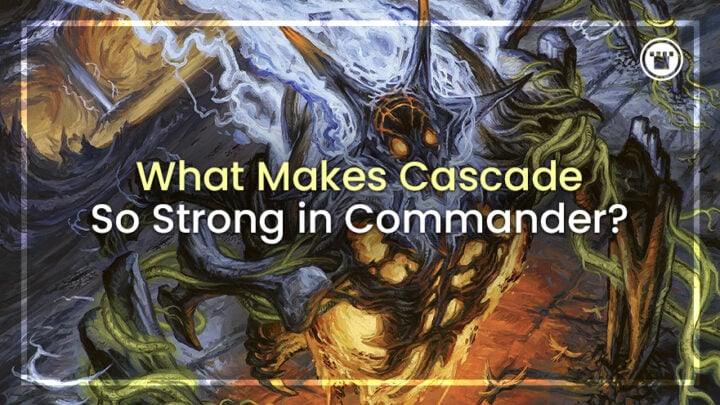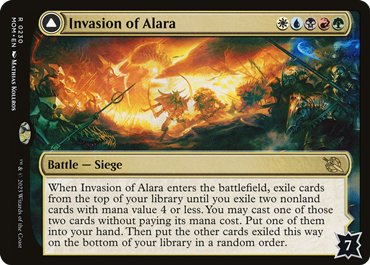Magic has been around for long enough to spin off hundreds of unique mechanics, each with its own unique advantages, dedicated support cards and memorable payoffs. But when you throw them all together in the grand melting pot that is Commander, a few mechanics clearly stand out from the pack. They offer versatile deck building options, consistent performance in different areas of the game and power ceilings which border on unbeatable. Today we’re talking about the Cascade mechanic in Commander.
When we describe “powerful” mechanics and archetypes in Magic, we’re usually speaking within the context of a single format. The lines dividing Standard card design from Modern or Commander card design are more blurred than ever before, but those formats still have very different priorities that lead different strategies to rise to the top.
That’’s even more true of the rough divide between casual and competitive Magic. With no stakes on the line, casual players tend to prize novelty and excitement, while tournament players aim to build the most consistent and predictable winning machines possible — more or less opposite views on what makes a deck “good.”
However, for the last decade and a half, one archetype has been living a thrilling, double life. Somehow, Cascade has been simultaneously the poster child for chaotic, splashy casual Commander and a prime enabler of seriously good combo decks across nearly every tournament format!
TWO SPELLS FOR THE PRICE OF ONE
Introduced in Alara Reborn, cascade essentially staples a random, cheaper spell from your deck onto whatever card has the cascade ability. Despite the inherent variance, it’s a very potent effect — to the point that most spells that trigger cascade don’t need to do much else besides that.
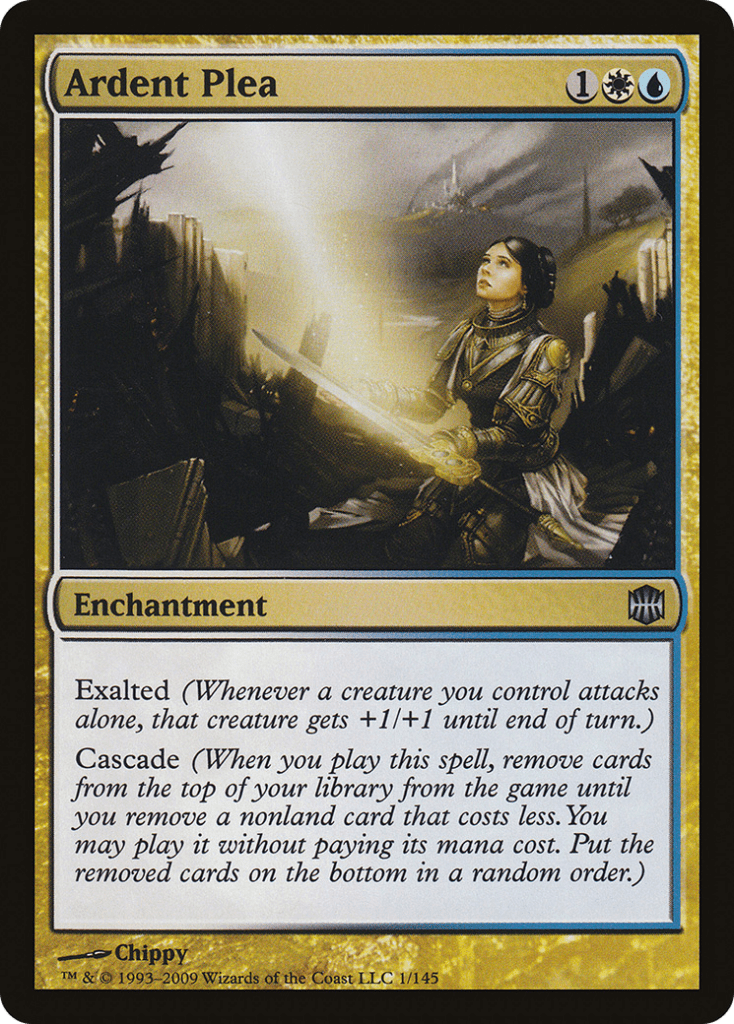
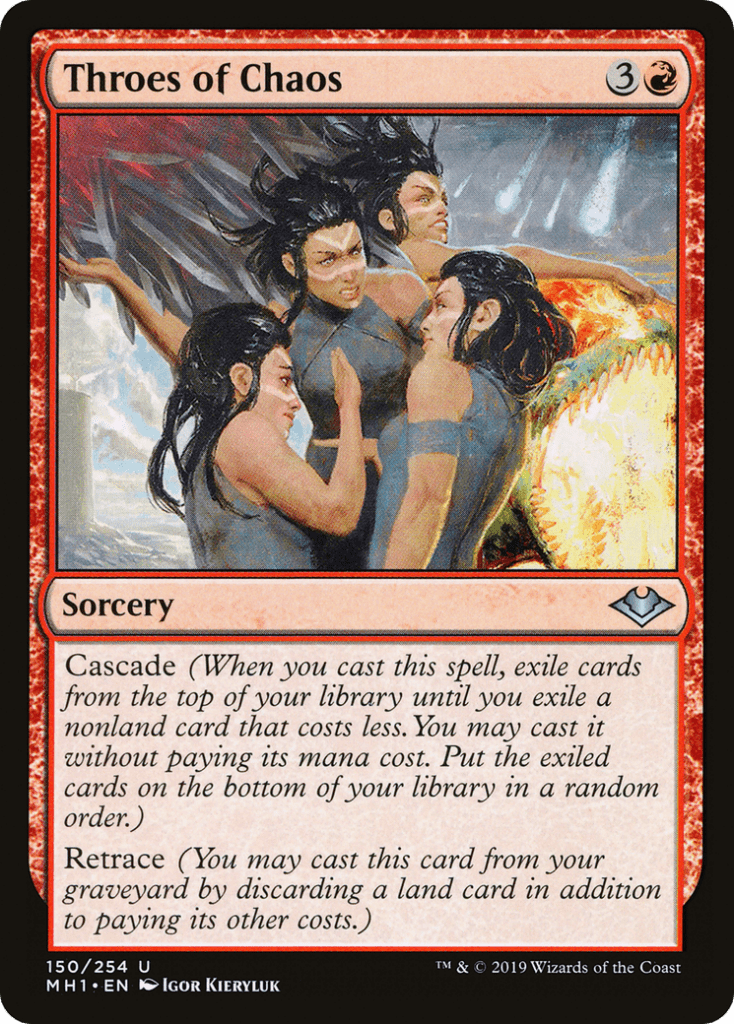
I think the appeal of cascade decks to casual players is pretty obvious. Getting a second spell for free but not knowing what it will be is the perfect blend of value and thrills — and the actual physical process of revealing cards from your library one-by-one makes for wonderful theater.
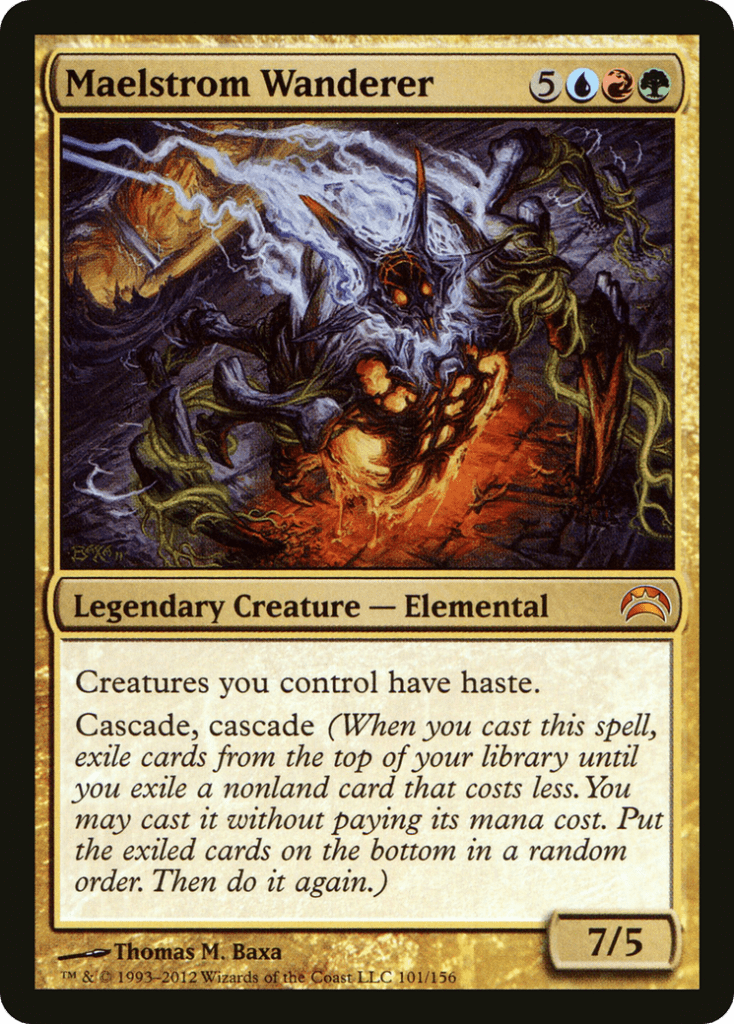
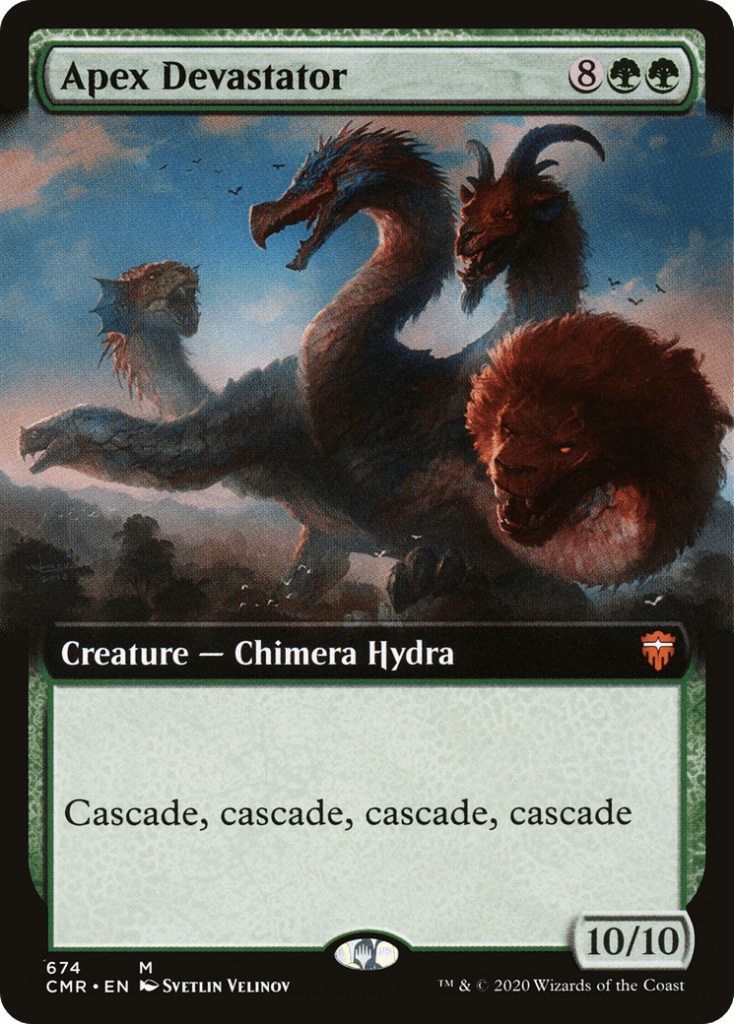
Multi-cascade bombs like Maelstrom Wanderer and Apex Devastator are the epitome of “Timmy” cards, show-stopping slot machines which impact the table like a meteor full of confetti! These awesome threats are beloved by casual players, and Wizards of the Coast has consistently brought the cascade mechanic back for multiplayer-focused sets like Planechase or Commander Legends, as well as the occasional Commander Deck card like Rain of Riches.
Cascade-themed Commander decks have gone from strength to strength as a result. Even as the actual cascade mechanic becomes gradually sidelined for different variations on the “cast one, get one free” mechanic, the overall game plan has actually gotten better.
If you jam your entire deck full of the most expensive and devastating cards you can think of, your first big cascade spell has a good chance to do something game-winning. And while the “card that costs less” clause means you can’t use cheaper cascade cards to free-cast the big ones, different free-casting effects like Aetherworks Marvel or Creative Technique offer a mana-efficient way to skip to the top of your mana curve so you can let cards like Devastator cascade you all the way down.
MAKING YOUR OWN LUCK
Of course, if you’re trying to break cascade in a tournament context, you don’t just want a fair chance to win games off a trigger — you want it to be guaranteed. You’d also rather not rely on super-heavyweight wincons like Apex Devastator since you need to actually cast them for cascade to trigger.
This is where the specific wording in that paragraph-long reminder text comes in clutch. The same “card that costs less” clause allows clever deck builders to eliminate randomness from the mechanic entirely, lining up spell costs to ensure that any cascade trigger will set off a specific string of cards in a self-assembling combo kill.
There are two major challenges to making this work: you need a win condition with a printed mana value of two or less and you need the rest of your spells to have printed mana costs of three or higher while still being a functional deck. The most famous solutions to the win-con puzzle are the zero-mana suspend sorceries from Future Sight and Modern Horizons 2, which has made them a fixture of tournament play.
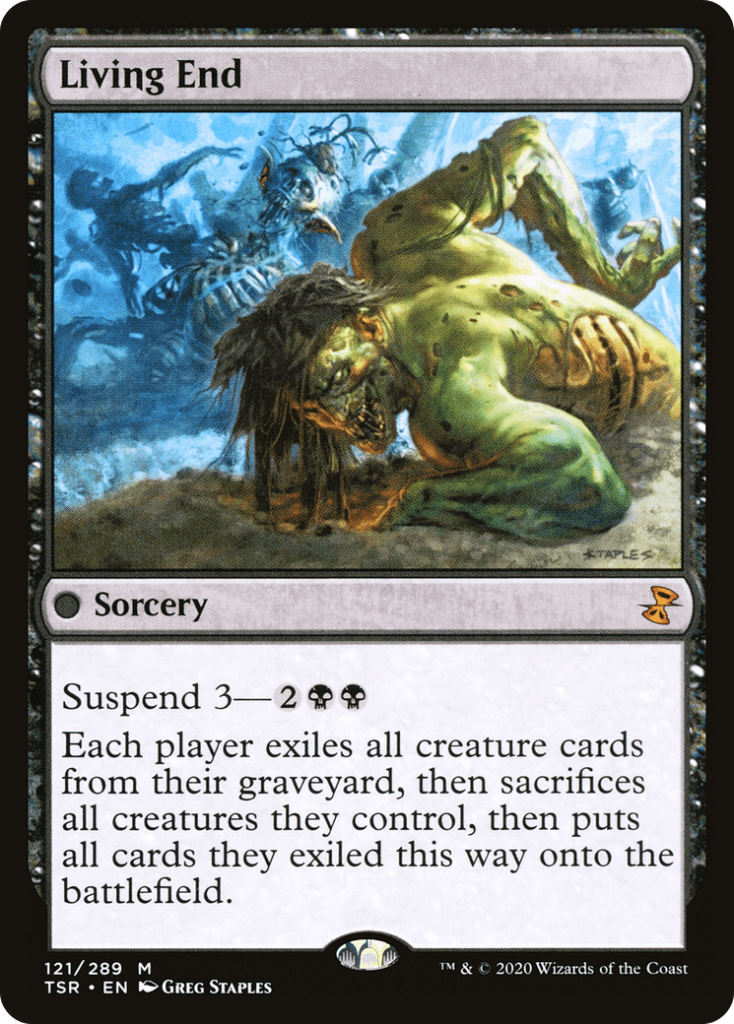
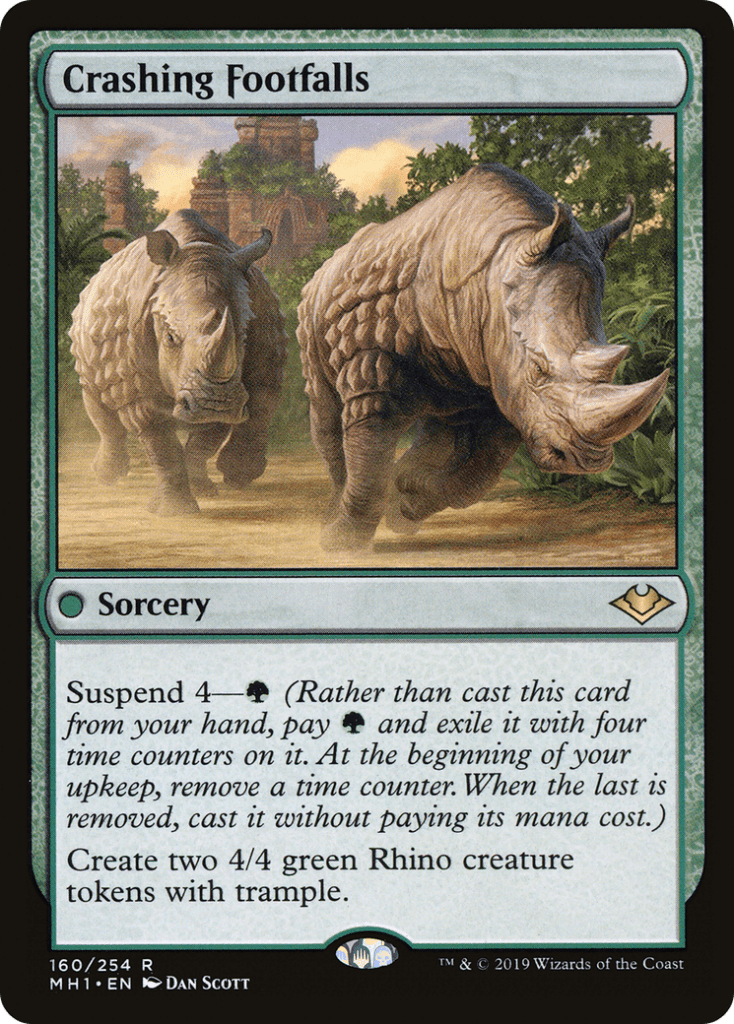
Living End, Restore Balance, Crashing Footfalls, Glimpse of Tomorrow and Resurgent Belief have all posted results at some point, while Hypergenesis was among the earliest cards banned from Modern. Also banned from Modern is Tibalt’s Trickery, which effectively allows you to end the cascade chain with any spell of any cost by countering the cascade spell used to find it!
More recently a Legacy deck emerged which can cast its entire library by resolving one Creative Technique, running most of the cards you would expect to find in a “casual” Commander cascade list! Even Standard is currently dealing with a “cascade” deck threatening the meta, abusing the way these mechanics interact with adventures.
Unlike a traditional split card, cards with adventures and MDFCs only count the mana value of their “front side” spell while in the hand, deck or graveyard. But if you, for instance, use Invasion of Alara’s ETB to find a Bramble Familiar, you’re still allowed to choose either half of the card to free-cast!
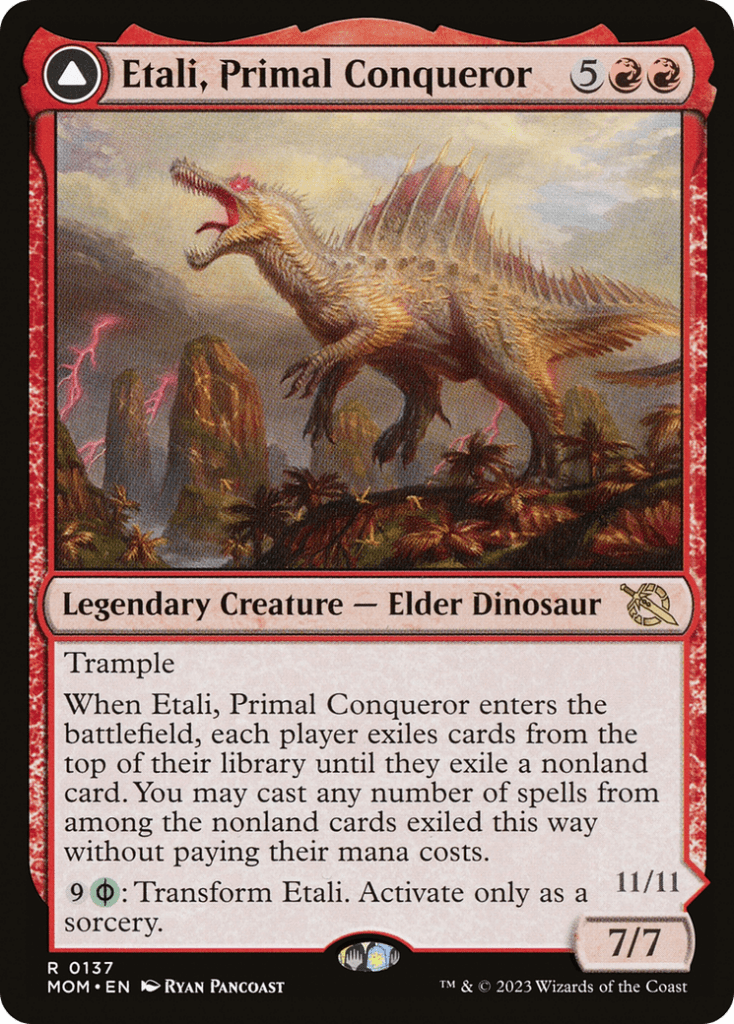
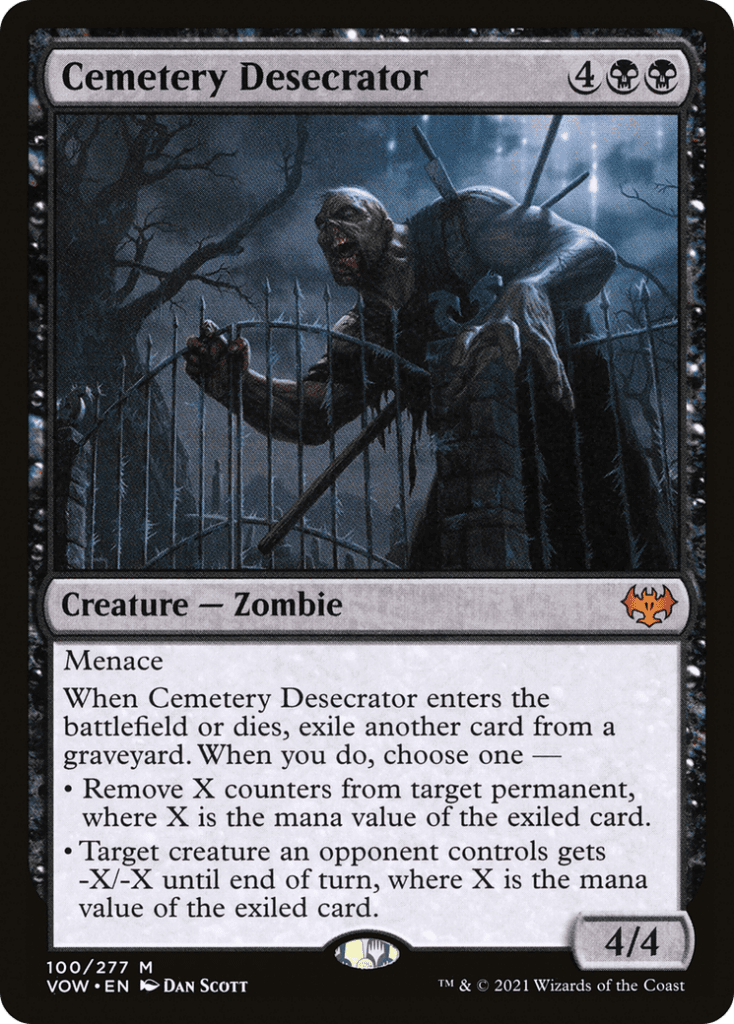
Better still, your Bramble Familiar targets include even more explosive cascade-like mechanics: Etali, Primal Conqueror can potentially set off another Familiar or Invasion, while Cemetery Desecrator can immediately remove the counters from Invasion to set off Awaken the Maelstrom, putting a Phyrexian Fleshgorger into play… and so on.
COMMANDING THE CHAOS
Commander’s singleton deckbuilding makes these deterministic cascade chains harder to engineer, though not impossible. Many people play Keruga as a companion, and that has essentially the same requirements.
But the awesome part is even if you don’t want to push the mechanic quite as far as someone from the Pro Tour, all the tricks and techniques these different decks have found can still be used to spice up your personal cascade brew. Once you understand how these decks can be “programmed,” you also have the ability to relax that control to the particular level you’re comfortable with, and to change out the win conditions for whatever chain-ending effect you think would be cool.

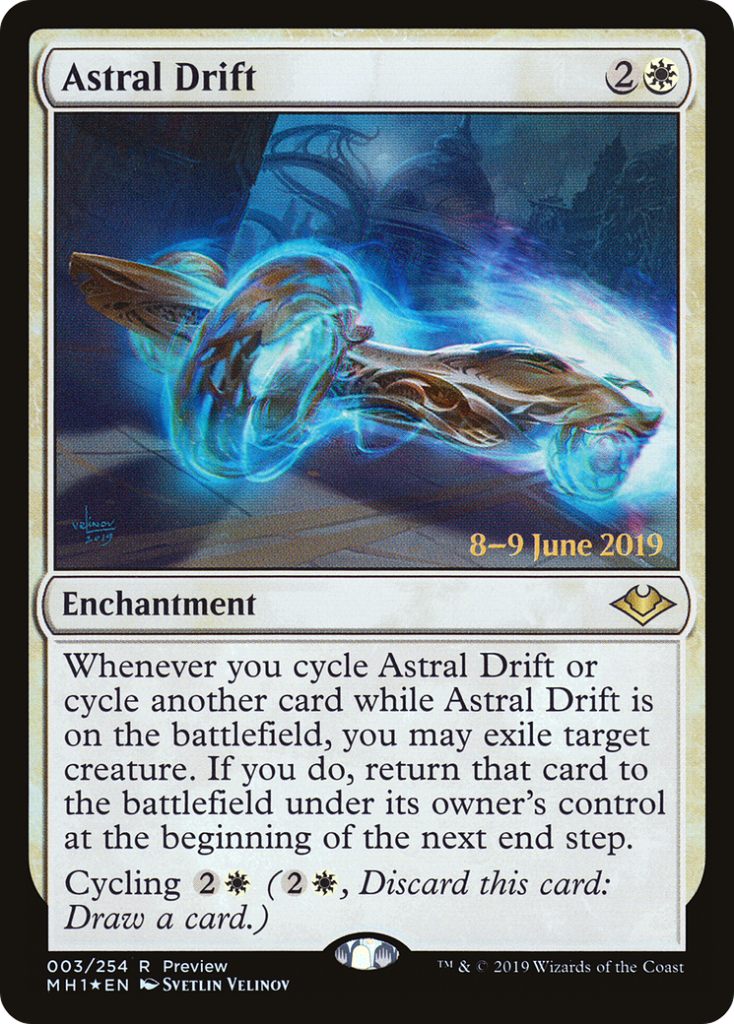
The sheer flexibility of cascade makes it as much of an enabler or engine for other deck types as a deck unto itself! If you’ve ever wished you could build around a specific non-legendary spell with the same consistency as you can a commander, cascade is arguably the best way to guarantee you can access it without making the entire deck a deterministic combo.
About the only thing you don’t have much choice around is the spells you need to sit outside of your central spell chain, since you need to choose from spells with mana values much higher than you actually intend to pay. This includes cards with alternate casting costs, cards with cost-reduction mechanics, cards you don’t actually cast and split cards. MDFCs and cards with adventures can also help if the front side or main spell is their more expensive half.

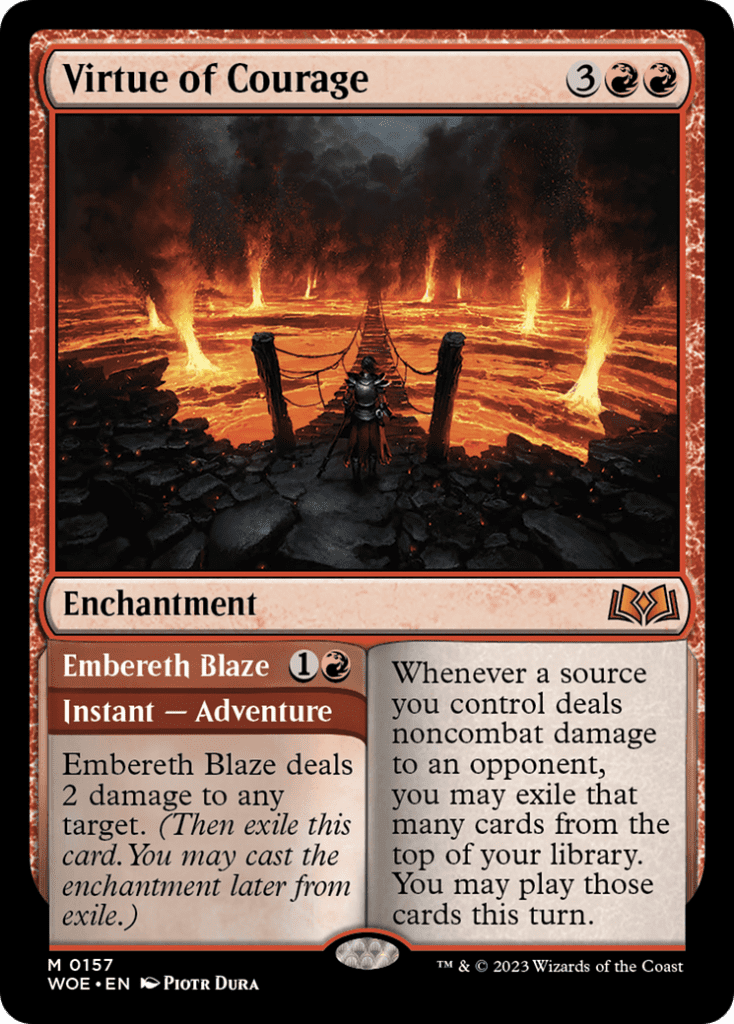
The cards we put in the Command Zone can even give us another way to access important effects at a convenient mana cost without breaking the chain. Of course, there are also many commanders that more directly support free-casting and cascade (or playing cards from exile, which is another theme cascade can leverage):
- Averna, the Chaos Bloom
- Abaddon the Despoiler
- Yidris, Maelstrom Wielder
- Imoti, Celebrant of Bounty
- Commander Liara Portyr
- Faldorn, Dread Wolf Herald
- Passionate Archaeologist
- Jodah, the Unifier
- Codie, Vociferous Codex
- Rashmi, Eternities Crafter
TO WIELD THE MAELSTROM
Altering the number of cards you have involved in the potential cascade combo vs. the number you’ve priced out of it gives you yet another deck building lever to fine-tune the experience: choosing your place on a spectrum between “tightly-managed combo-control” and “my entire deck is lottery tickets.”
I don’t know if there’s any mechanic with gameplay and deck building patterns more suited to the Commander format than cascade. No matter how many Maelstrom Wanderer piles you’ve seen in your day, there’s no way you’ve even begun to scratch the surface of its possibilities. Try it for yourself, especially if you’re looking for a deck that’s splashy and fun to goldfish — and enjoy Magic’s true rollercoaster ride.

Tom’s fate was sealed in 7th grade when his friend lent him a pile of commons to play Magic. He quickly picked up Boros and Orzhov decks in Ravnica block and has remained a staunch white magician ever since. A fan of all Constructed formats, he enjoys studying the history of the tournament meta. He specializes in midrange decks, especially Death & Taxes and Martyr Proc. One day, he swears he will win an MCQ with Evershrike. Ask him how at @AWanderingBard, or watch him stream Magic at twitch.tv/TheWanderingBard.

